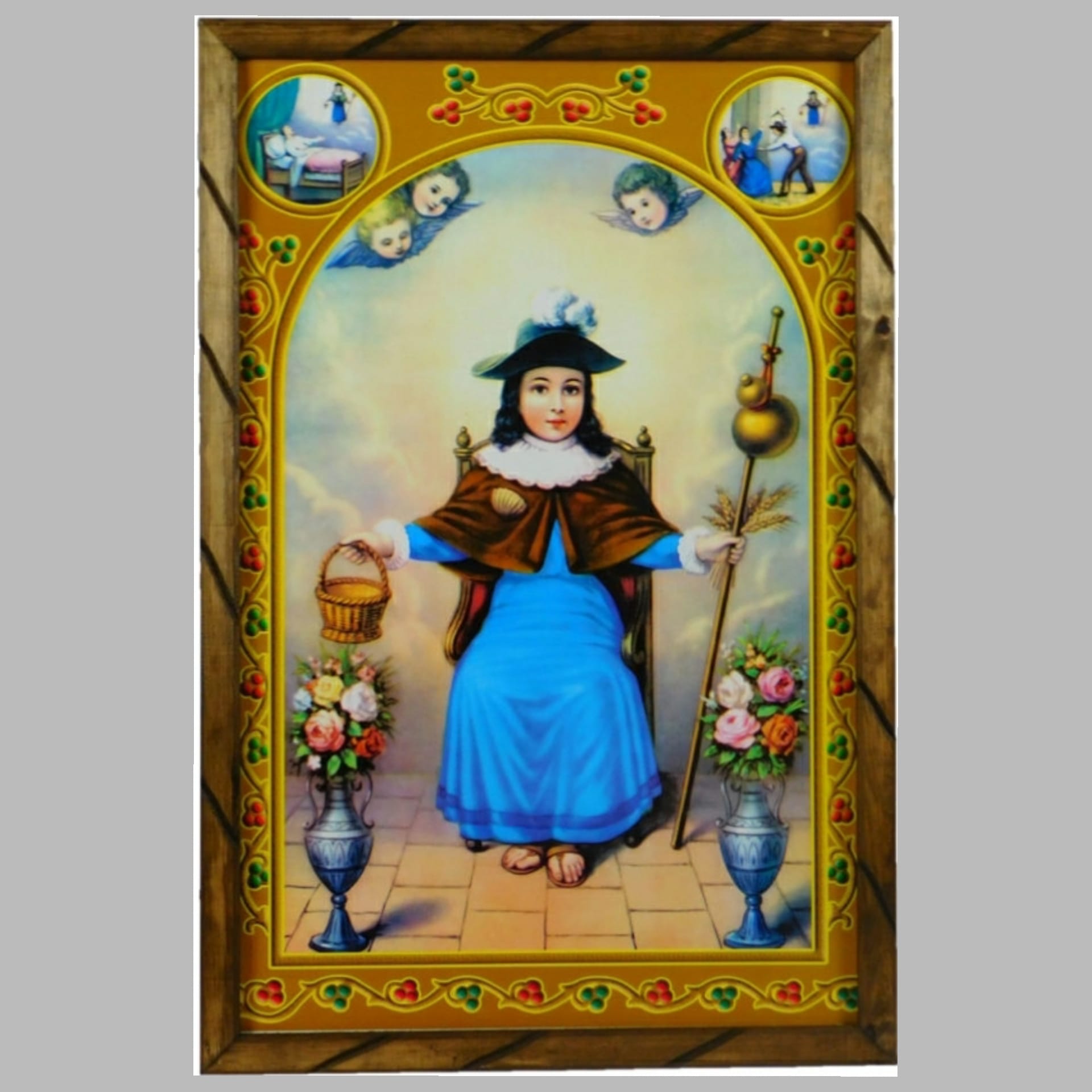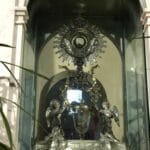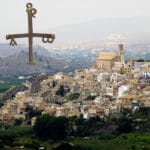Journey with us into the captivating world of the Niño de Atocha, a revered figure of faith whose story has resonated for centuries. From its origins in medieval Spain to its profound impact on the lives of believers across Latin America and the Southwestern United States, the Niño de Atocha stands as a beacon of hope and a testament to the enduring power of belief. Discover the rich tapestry of history, devotion, and miracles that surround this enigmatic image of the Christ Child.
The Enduring Legacy of the Niño de Atocha
The Niño de Atocha is more than just a statue; it’s a powerful symbol of hope, comfort, and divine intervention for countless individuals across the globe. This beloved image of the Christ Child as a small pilgrim has a history interwoven with centuries of faith, miracles, and cultural significance.
The devotion likely originated in 13th-century Spain, rooted in the deep reverence for the Virgin Mary prevalent during the Middle Ages. This devotion eventually intertwined with a compelling legend that emerged during the tumultuous period of Moorish rule. Christian captives in Atocha, a town near Madrid, were reportedly forbidden from receiving visitors except for children. Facing starvation, the prisoners prayed fervently to the Virgin Mary. According to the enduring narrative, a young child dressed as a pilgrim began appearing, miraculously providing food and water to the desperate captives. The supplies, though seemingly meager, never ran out. This mysterious child became associated with the Christ Child himself, coming to their aid in their darkest hour—the Holy Child of Atocha.
This image of the young pilgrim, carrying a basket overflowing with provisions, a staff to guide him, and a gourd filled with water, became deeply ingrained in the hearts of the faithful. These simple objects transformed into powerful symbols: the basket represents abundant provision, the staff symbolizes protective guidance, and the gourd signifies spiritual and physical sustenance. He became known as the protector of travelers, a source of solace for prisoners, and a friend to the poor and needy.
From Spain, the devotion to the Niño de Atocha journeyed across the Atlantic to the New World with the Spanish colonizers, taking root particularly in Mexico and the Southwestern United States. The magnificent Shrine of Plateros in Zacatecas, Mexico, stands as a testament to the enduring faith and deep affection people hold for the Holy Child. [https://www.lolaapp.com/sand-dollar-and-doves] It serves as a destination for countless pilgrims seeking solace, offering prayers, and leaving tokens of gratitude for perceived blessings.
People connect with the Niño de Atocha in deeply personal ways. Some recite specific prayers, while others embark on pilgrimages. Many leave small offerings at his feet, such as tiny shoes, representing a journey taken under his watchful eye, or letters filled with heartfelt requests and expressions of gratitude. The traditions surrounding the Niño de Atocha are diverse, reflecting the varied cultures where his devotion has flourished.
In some regions, the reverence for the Niño de Atocha has intertwined with other belief systems, such as Santería, creating unique blends of spiritual practices. This fusion of traditions demonstrates the adaptability of the Niño de Atocha’s image and its profound cultural impact. While specific practices may vary, the core belief—that a divine child offers comfort, protection, and hope—remains constant. Ongoing research continues to explore the origins and evolution of the Niño de Atocha devotion. Some scholars suggest connections to earlier child saints or even pre-Christian deities, [https://www.lolaapp.com/norse-mythology-beasts] highlighting the complex interplay of cultural and religious influences.
Understanding the Devotion to Santo Niño de Atocha
The Santo Niño de Atocha is more than just a statue; it embodies hope and faith for countless believers. But what makes this image of the Christ Child so compelling? Let’s delve into the history, symbolism, and enduring power of this devotion.
Emerging during the tumultuous Reconquista in Spain, a time of conflict between Christian and Muslim rulers, the story of the Santo Niño centers on Christian prisoners held captive under Moorish rule. Forbidden from receiving outside aid, they faced dire circumstances. Yet, according to tradition, the Santo Niño, a childlike image of Jesus, miraculously appeared to these prisoners, bringing them food and comfort. He would arrive, often at night, carrying a basket brimming with bread, sometimes flowers, and a gourd filled with fresh water, offering not only sustenance but also a glimmer of hope.
The visual portrayal of the Santo Niño de Atocha adds another layer to his story. Typically depicted as a young pilgrim in a brown cloak and blue robe, he often wears a wide-brimmed hat adorned with a feather and carries a staff, reminiscent of a traveler. The basket, staff, and gourd reinforce his role as a provider and guide, symbolizing his miraculous ability to sustain and protect those who invoke his name.
Over time, countless miracles have been attributed to the Santo Niño de Atocha, ranging from healing the sick to protecting travelers and intervening for those unjustly imprisoned. People from all walks of life implore his intercession for guidance, solace, and hope. Some believe he aids in finding lost items, while others turn to him for strength during difficult times.
With the arrival of Spanish colonizers, the devotion to the Santo Niño crossed the ocean, flourishing in Mexico and the southwestern United States. He became a source of comfort and strength, particularly for marginalized communities facing hardship. Even today, the devotion resonates deeply worldwide. Shrines dedicated to him serve as places of pilgrimage, prayer, and reflection. His image, found in homes and businesses, serves as a constant reminder of faith and hope.
While the stories surrounding the Santo Niño de Atocha may be considered miraculous, faith and belief often play a significant role in these narratives. Some view these accounts as literal interventions, while others may interpret them as symbolic representations of hope and resilience. The ongoing study of the traditions associated with the Santo Niño de Atocha highlights the continual evolution of faith and cultural practices.
Why Pray to the Santo Niño de Atocha?
The Santo Niño de Atocha is a widely venerated image of the Christ Child. But what compels so many people to pray to him? The answer, like many aspects of faith, is multifaceted.
Historically, he was seen as a protector of travelers, particularly during the arduous and often dangerous pilgrimages of the past. People sought his guidance and protection on their journeys, establishing him as a “pilgrim’s patron.” This tradition continues today, with people invoking his name before any type of journey.
The belief in the Santo Niño’s ability to perform miracles and grant favors is another key aspect of the devotion. People turn to him in challenging situations, hoping for divine intervention. Historically popular among prisoners, he provided comfort and hope in dire circumstances. Today, people pray to him for various needs, from healing illnesses to finding lost items, believing in his power to intercede.
The Santo Niño also represents hope and consolation. His gentle image brings comfort, embodying innocence and purity. In times of distress, he offers solace and reassurance. Many also connect with him through the Virgin Mary, praying to her to intercede with her son. Ongoing research explores the significance of figures like the Santo Niño de Atocha. Some believe his popularity stems from the human need for comfort and protection, while others suggest it resonates with our innate compassion for children. There’s likely no single answer, as individual reasons for prayer are shaped by personal experience, cultural context, and spiritual beliefs.
| Aspect of Devotion | Description |
|---|---|
| Pilgrim Patronage | Protects and guides travelers, ensuring safe journeys. |
| Miraculous Aid | Grants favors and miracles, providing support during challenging times. |
| Hope and Consolation | Offers comfort and solace during periods of uncertainty or emotional distress. |
| Intercession through Mary | Devotees often approach the Santo Niño through Mary’s intercession. |
Is Santo Niño de Atocha Baby Jesus?
The Santo Niño de Atocha is often depicted as a child, leading many to wonder: Is he baby Jesus? The answer is nuanced. He represents the Christ Child, specifically as a young pilgrim, embodying the spirit and helpful nature of Jesus as a child. He is not a literal depiction of the infant Jesus but a symbolic representation of Jesus’s compassion and willingness to help those in need.
The story of the Santo Niño de Atocha originates during the Reconquista in Spain. Tradition holds that Christian prisoners held captive by the Moors were miraculously provided with food and water, often visualized as a small child bringing a basket of sustenance. This child became associated with the Holy Child, and the devotion began to spread.
The Santo Niño’s pilgrim attire, including a staff, gourd of water, and basket, symbolizes his mission of helping those in need. The offering of children’s shoes at his shrines signifies his constant journey alongside believers. Numerous miracles and favors have been attributed to him, with people recounting stories of protection, unexpected help, and comfort during trials. Some scholars suggest the figure embodies the hope that help can come from unexpected sources, even a child.
The devotion to the Santo Niño de Atocha is deeply embedded in Hispanic culture, present in art, literature, and folklore. Ongoing research explores the origins and evolution of the devotion, with some historians suggesting roots in earlier pagan traditions. The devotion’s enduring power lies in its ability to evolve and resonate with individuals in diverse ways.
| Feature | Description |
|---|---|
| Representation | The Christ Child as a young pilgrim |
| Origin | Atocha, Spain, during the Reconquista |
| Symbolism | Staff, gourd, basket, children’s shoes |
| Significance | Hope, comfort, aid in times of need, divine intervention |
While not literally the infant Jesus, the Santo Niño de Atocha represents an important aspect of Jesus’s nature: his compassion and willingness to help those in need. He symbolizes hope, resilience, and the belief that even a child can make a difference. Our understanding of historical and religious figures is constantly evolving. New research and interpretations can deepen our appreciation for these complex figures.
















